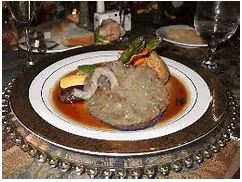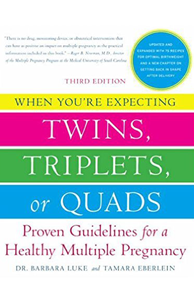I’ve been an Ob-Gyn for a long time. The late 70’s and early 80’s were a simpler time. Donald Trump would say happier, better time, but his memory is a bit selective. Following deliveries we’d put the placental afterbirth in a plastic bag and toss it in a -80 freezer. Every month or so someone would come pick them up and they would make their way into the most popular shampoos of the day.
Manufacturers claimed that placental shampoo protein coats the hair making it shinier and fuller, although there was little evidence for the claims. The emergence of HIV and AIDS in the mid-80s essentially ended this profitable little hospital side business. Placental shampoo, however, has enjoyed a limited revival especially in the U.S. Hispanic market.
The use of placenta in cosmetics dates back to those happiest of days in the late 40s and 1950s when the cosmetic industry was unregulated. What else but the placenta could bring back that thick, rich head of hair and glowing complexion that women enjoy while pregnant? Beauty experts who have looked into the chemistry behind cosmetics state that placental protein may add shine to hair, there are many other protein products that have the same effect.
If you are interested in trying to recapture your pregnancy hair you might want to give a placental shampoo a try. La Bella and Queen Helene Placenta Shampoo are two products containing placenta. For those of you who’ve seen the top of my head I can promise you that it can’t hurt. Well, I don’t think it can.
In the 1990s, we began to get more requests to take the placenta home. The request always seemed a bit odd, but we’d smile and say “sure, it’s yours after all.” When asked why, most said they were going to plant it under a beautiful spruce tree or mighty oak that can grow along with their child. Many parents choose plants with special significance such as a fruit tree or rosebush that will flower or produce nourishing food each year.
Several cultures including the Navajo Indians and the Maori from New Zealand believe that the first man arose from the earth. They will routinely bury the placenta to symbolize the baby’s link to the earth and to complete the circle of life. Helpful tip- if you are going to bury your placenta be sure to dig down at least 1 or 2 feet to make sure Spot doesn’t dig it up and bring it back to the porch.
Although I have no personal experience, a close relative to the buried placenta is the “lotus birth.” The thinking here is that separation of the newborn from the placenta is a natural process and that the placenta should be left attached to the baby via the cord until the cord falls off on its own. With a “lotus birth” the placenta is covered with salts and/or herbs (parsley, sage, rosemary and thyme are recommended as best by Simon and Garfunkel) and then covered with a diaper or cloth pad and then kept close to the baby.
I am told that the “lotus birth” is a spiritual experience, although my dog did not seem too interested in it when she had her puppies. Although the spiritual benefit is unclear, I do tell my interested patients that it seems like a great way to keep the in-laws and other unwanted guests away for a few days to a week.
After almost 50,000 deliveries it is surprising how few are remembered distinctly. One that sticks with me is a young woman who asked for her placenta then showed me a placental cook book. Her plan was a wok and a stir-fry with onions, green peppers and broccoli florets. Yum.
Which brings me to placentophagy. A word I did not know until just recently and is persistently underlined in red by my spell-check. Placentophagy is defined as the ingestion of a human placenta postpartum, or at any time, by any person, either in raw or altered (e.g., cooked, dried, or sous vide) form. It is further sub-divided into maternal or non-maternal, but let’s not worry about the fine points right now.
Proponents point to the fact that the vast majority of placental mammals practice maternal placentophagy and that there are numerous historical references to placental consumption (Egyptians, Siege of Jerusalem, ancient Chinese medicine, traditional Gullah medicine, Jamaica Voodoo, and the Kol Tribe of Central India as a treatment for infertility). A noted psychiatrist in Baltimore recommends placenta with fava beans and a nice Chianti.
Besides the stir-fry, my patient’s placenta cookbook offered recipes for placental lasagna, spaghetti, Frogmore stew, and pizza. Small pieces of raw placenta can also be blended into a fruit smoothie. If a woman loses a lot of blood with delivery, it is recommended that the placenta be sliced into filets and grilled with onions. I don’t know, but it can’t taste any worse than liver.
More importantly, the practice has been endorsed at the highest level by the drivers of modern day culture- Hollywood celebrities including January Jones, Alicia Silverstone and Kourtney Kardashian. They have touted placentophagy as the remedy for postpartum depression, fatigue and impaired lactation. January Jones credits eating her placenta with allowing her to get back to her grueling schedule of being a minor recurring character on Mad Men in only six weeks!
On the flip side of the coin, most people remain skeptical. A 2015 review of placentophagy research back to the 1950s found no credible evidence of any human benefit and no evidence to assure its safety. In 2010 the University of Nevada, Department of Anthropology did a cross-cultural ethnographic survey of over 179 contemporary human societies and identified only a single culture (Mexican-American) that even mentioned maternal placentophagy. My brother is a Maternal-Fetal Medicine specialist in Cajun-spiced Louisiana and he said he’s never heard of placentophagy. And that’s from a culture that will make a gumbo from Nutria.
So why a blog? Isn’t this a topic best left unspoken? However, interest in the topic has been sparked by the emergence of “placental pills.” “Battling Baby Blues” was a page 1 article on the Health section of the Post and Courier on July 11th ,2016. For women that cannot stomach the idea of eating their placenta, many midwives or other alternative health care advocates are now promoting placenta encapsulation.
The encapsulation process can be done one of two ways: steamed or raw. In the first approach the placenta is steamed with various herbs (ginger, lemon, frankincense, and myrrh) then slowly cooked at low temperatures (below 100 degrees) over 8-12 hours. When fully dehydrated, the placenta is pulverized into a fine powder and put into tasteless capsules. The raw method forgoes the initial steaming. The placenta is simply allowed to dehydrate then is ground up and placed into capsules.
A good sized placenta can usually generate about 100 capsules which can be available in a couple of days after birth. The usual recommended dosage for placenta capsules is one pill twice a day for 2-3 weeks leaving multiple capsules available for other stressful life events or “low times”.
In a frequently cited paper, Selander and other researchers at UNLV and the University of South Florida surveyed 189 new mothers and found that 75% reported positive experiences from eating their own placenta. The new mothers reported “improved mood”, “increased energy” and “improved lactation.” The authors themselves acknowledge that “no systematic analysis has been performed to evaluate the experiences of women who engage in this behavior.” Critics also point out that the lead author also has a commercial business encapsulating placentas.
The fact of the matter is, that if you believe consuming your placenta will improve your mood and prevent postpartum depression, it probably will. No one will convince you otherwise. I believe that Captain Crunch with Crunchberries will improve my virility and lengthen my life. Nobody is going to convince me otherwise. I believe that Quaker Oats will probably back me up on that.
However, if you are a discerning consumer you should know the following things. The preparation or storage of placental capsules is completely unregulated. Their safety is unknown. After steaming, cooking, drying and pulverizing, any potentially beneficial proteins or hormones in the placenta would be completely destroyed. The only evidence of benefit is based on surveys and internet testimonials. And, the roughly $200 price tag would be better spent on a lovely young plum tree that will give back gorgeous and delicious fruit each spring.
As Professor and Maas Chair for Reproductive Sciences I have practiced Obstetrics and Gynecology at the Medical University of South Carolina for more than 30 years. However, the opinions expressed in this blog are mine alone and not those of my employer.
In addition, Bruce Springsteen provides another possible cure for post-partum depression with a rarely performed version of “Living Proof” which he recorded after the birth of his first child.








I’ve learned things today I never thought I would learn, doc. WOW. Will share with inquiring minds.Placentas, crunch berries, and Bruce Springsteen…wow… Thank you for your informative and entertaining posts!
Jayne,
Glad you enjoyed the post. Working on another which I’ll post on Sunday am. That one will be a good one too. Love to come down to Beaufort. Hope we can work something out……………take care………………roger
awesome post, Roger!